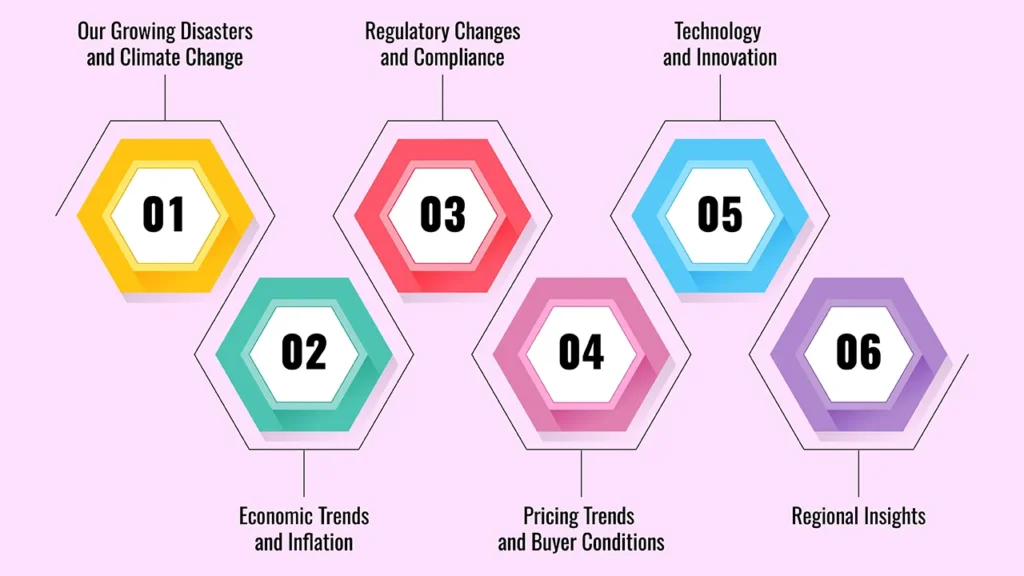The reinsurance market underpins the world’s insurers, providing risk transfers and financial security in an uncertain world. As 2025 breaks, reinsurance markets are rebalancing to a new normal: spiking inflation, devastating natural disasters, the ascendance of alternative capital, changing regulations, and technological disruption.
To make sense of that, insurers, brokers, investors and other stakeholders need insight into these and other truths we’re witnessing in today’s dynamic environment so they can successfully navigate risk and opportunity.
1. Global Market Overview and Size
The global reinsurance market is projected to reach USD 789.33 billion in 2025, on the back of increasing penetration of the Internet throughout the world. Further, the market is anticipated to expand to USD 2,000.08 billion by 2034, growing at a CAGR of around 10.88% during 2020-2025.
It has been driven by growing insurance penetration, the recurrence of catastrophic events, changing regulatory dynamics, and the growing presence of alternative forms of capital. For context:
- APAC market revenue is projected to increase from $78.6bn in 2025 to $127.1bn in 2033.
- Revenue in North America rises from US 146.4 billion between 2025 and 2033 to US 208.3 billion.
- On the whole, the market is seeing double-digit growth, particularly in regions like APAC, driven by robust economic factors and heightening insurance awareness.
2. Key Market Drivers

1. Our Growing Disasters and Climate Change
Insurers are facing catastrophic financial risk from natural disasters, including hurricanes, floods and wildfires. Insured losses caused by catastrophes around the world topped USD 108 billion in 2023, underlining the vital need for strong reinsurance. Climate change keeps exacerbating these risks, driving up prices for property reinsurance and catastrophe coverage — though 2025 brought a small letup for property rates down from peak levels.
2. Economic Trends and Inflation
Social inflation, increasing claims costs and more litigation are pushing casualty reinsurance pricing higher, with rates expected to be up double digits in 2025 for workers’ compensation and commercial auto lines in particular. Inflation affects the severity of claims and the value of policies. To limit exposures, reinsurers are moving towards more rigorous underwriting and larger retentions.
3. Regulatory Changes and Compliance
As reinsurance increasingly becomes more of a factor across the regions of the world, we see the changes in the emerging regulation affect reinsurance structures driving insurance companies to adjust product designs and allocate capital to meet these requirements, notably throughout the Asia-Pacific and European markets. These changes drive innovation and sector maturation.
4. Pricing Trends and Buyer Conditions
We are having a mixed view of the reinsurance pricing cycle of 2025. Rates on property reinsurance are stabilising, but those on the casualty lines are subject to societal and economic pressure to harden. Mid-year renewals demonstrate a competitive marketplacewith purchasers driving favorable market capacity and alternative capital coming in.
Catastrophe bond issuance reached a record in 2025, with more than US 16.8 billion available to sponsor globally.
Competitors providing alternative capacity (such as through insurance-linked securities) are also exerting downward pressure on pricing and expanding risk solutions availability.
5. Technology and Innovation
Digital transformation is making over the reinsurance sector. Underwriting, claims management and risk modelling are being streamlined by data analytics, artificial intelligence and insurtech platforms.
These capabilities enable reinsurers to expedite product development, improve risk selection, and adapt quickly to emerging threats – such as cyber risk and supply chain breakdowns.
6. Regional Insights
North America continues to be the biggest market, accounting for 44% of global revenue, on the back of sophisticated risk modelling and persistent demand for protection against catastrophes.
APAC is the fastest-growing region with the influence of regulatory changes, insurtech, and rising concerns over insurance.
Europe witnesses steady developments, with a focus on compliance and cross-border cooperation.
3. Challenges in the Reinsurance Sector
Aspiring reinsurers can be up against tough going, however, even if the economy is hopping:
- Natural disasters happen so fast and so randomly that the claims results are unpredictable.
- Increasing costs and capital pressures drive a more focused approach to the acceptance and retention of risk.
- Strengthening the terms of the contracts and transparency requirements requires negotiation and governance skills.
- Smaller players may find the market too hot to handle, which would contribute to consolidation and niche partnerships.
4. Opportunities for Growth
The future still looks bright for reinsurers with disciplined underwriting, innovation and customer-focused solutions. Technological innovation, growth of alternative capital and greater demand for risk transfer create fertile soil for fresh product offerings.
Cyber risk protection, climate resilience, and developing low-insurance penetration but rising awareness markets also present a wealth of opportunities.
5. Future Outlook
Here, in a world of rapid climate change, advances in technology and evolving demographics, businesses that manage to bring together superior data skills, collaborative relationships and market discipline will succeed.
It’s not just that the reinsurance industry in 2025 is reacting to risk; rather, it is actively influencing how societies and businesses recover, rebuild and flourish in an environment of uncertainty.
Final Words
Inending,g 2025 marks an important year for reinsurers of the future, dominated by financial prosperity, increased risk perspective, transformational technological advancement and changing regulatory demands.
Strategically managing these trends will be of paramount importance to every reinsurer and reinsured, as both work towards a resilient and sustainable future in an evolving global market.
Frequently Asked Questions:
1. What are the factors for the growth of the reinsurance market in 2025?
Increasing critical events driven by climate change, rising take-up in emerging markets, more use of alternative capital and regulatory changes throughout regions are all contributing to growth.
2. Why are reinsurance rates rising while property rates are easing?
“Casualty prices are increasing with the impact of social inflation, litigation and adverse claim development, while property rates have hardened due to a strong market capital and moderating catastrophe losses, despite meaningful risk,” said Elke Vagenende, CEO of brokers Willis Towers Watson’s global large corporate business.
3. How is technology impacting the reinsurance industry?
Technology is making more accurate risk analysis, faster product innovation and more efficient handling of claims possible. A thousand miles away at a large reinsurance company, artificial intelligence and advanced analytics allow reinsurance providers to respond to new risks and to provide better service.
4. What is the role of alternative capital in reinsurance?
Alternative capital — insurance-linked securities, such as catastrophe bonds — provides new sources of underwriting and risk capacity, brings added competition and also enables reinsurers to provide tailored products for even high-severity and complex events.

Leave a Reply